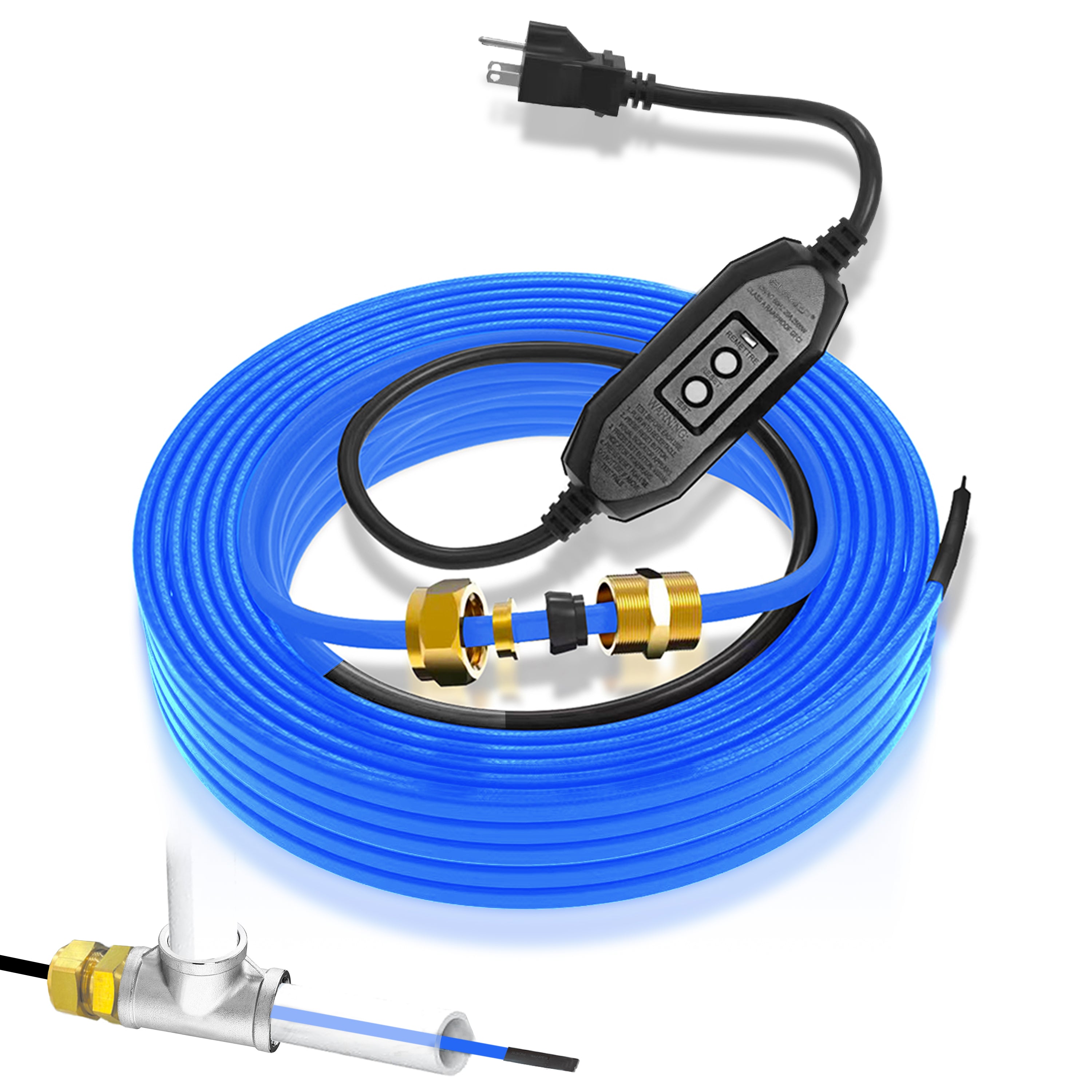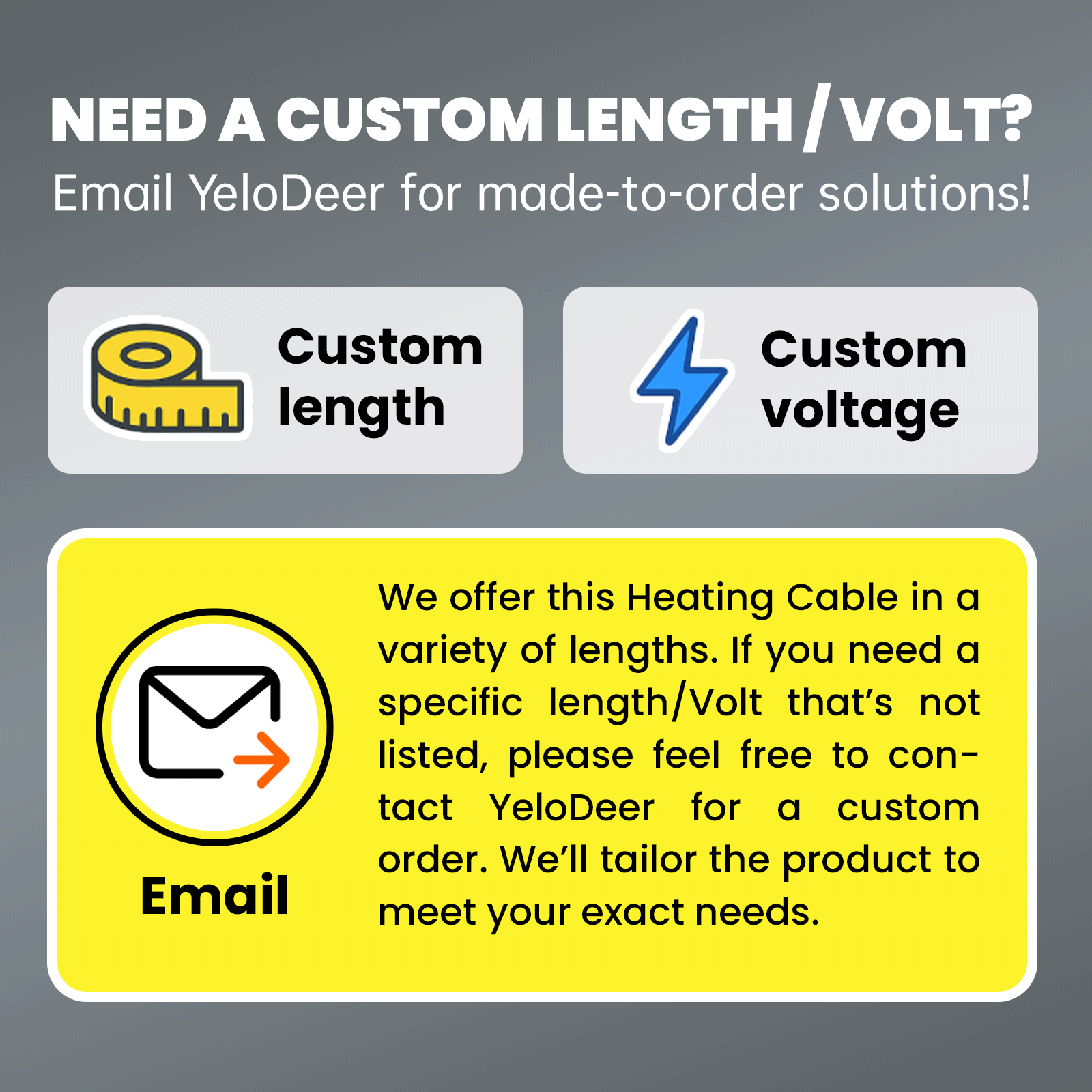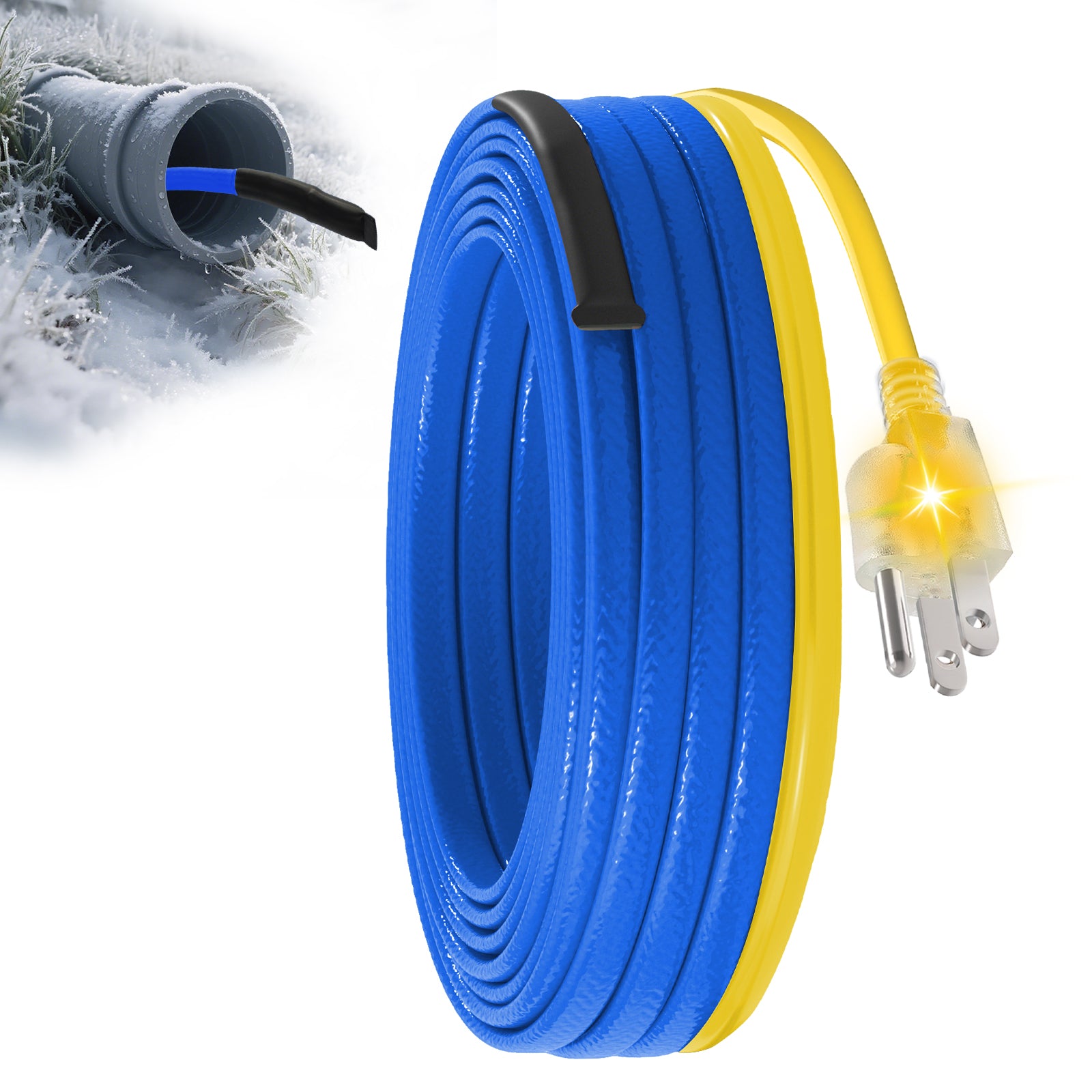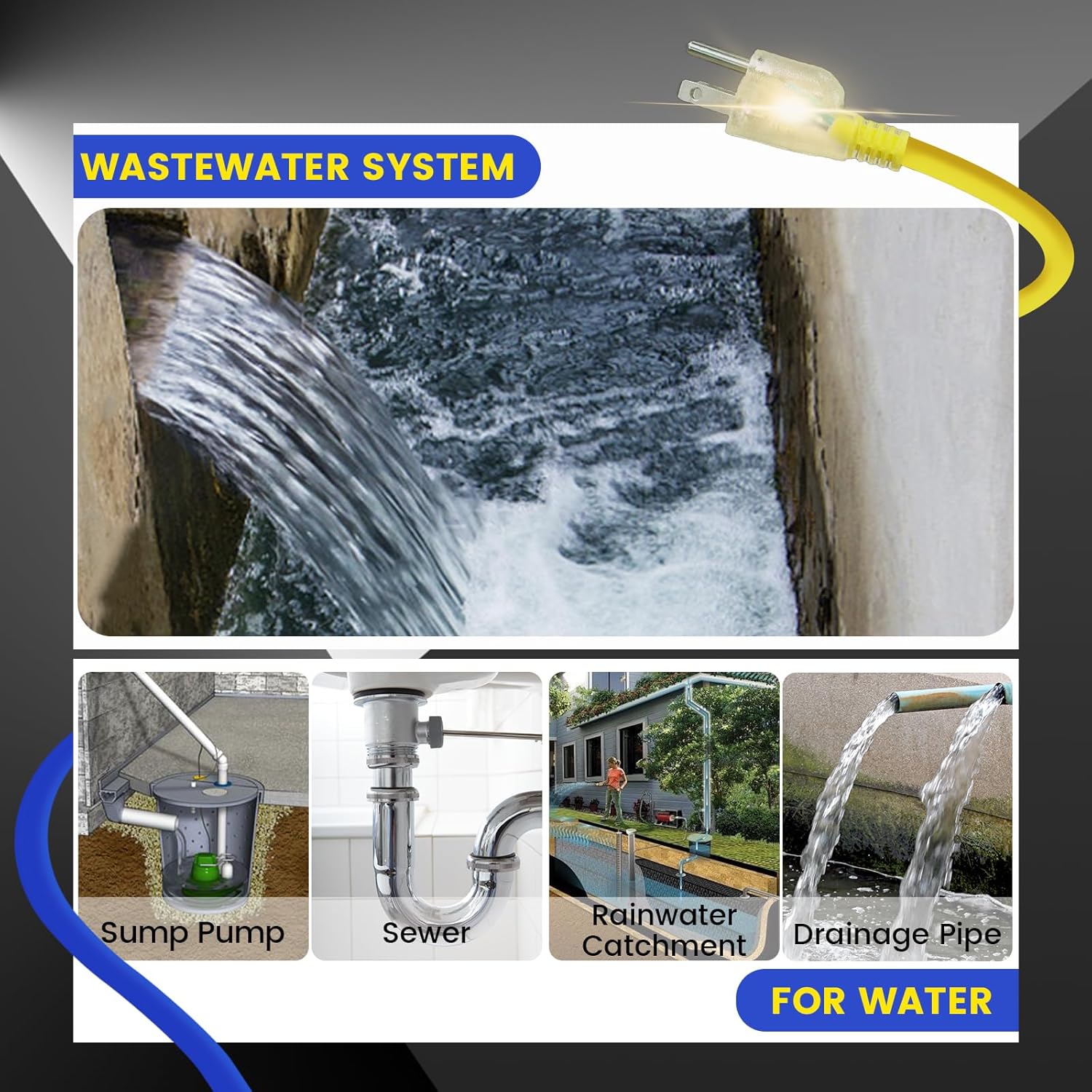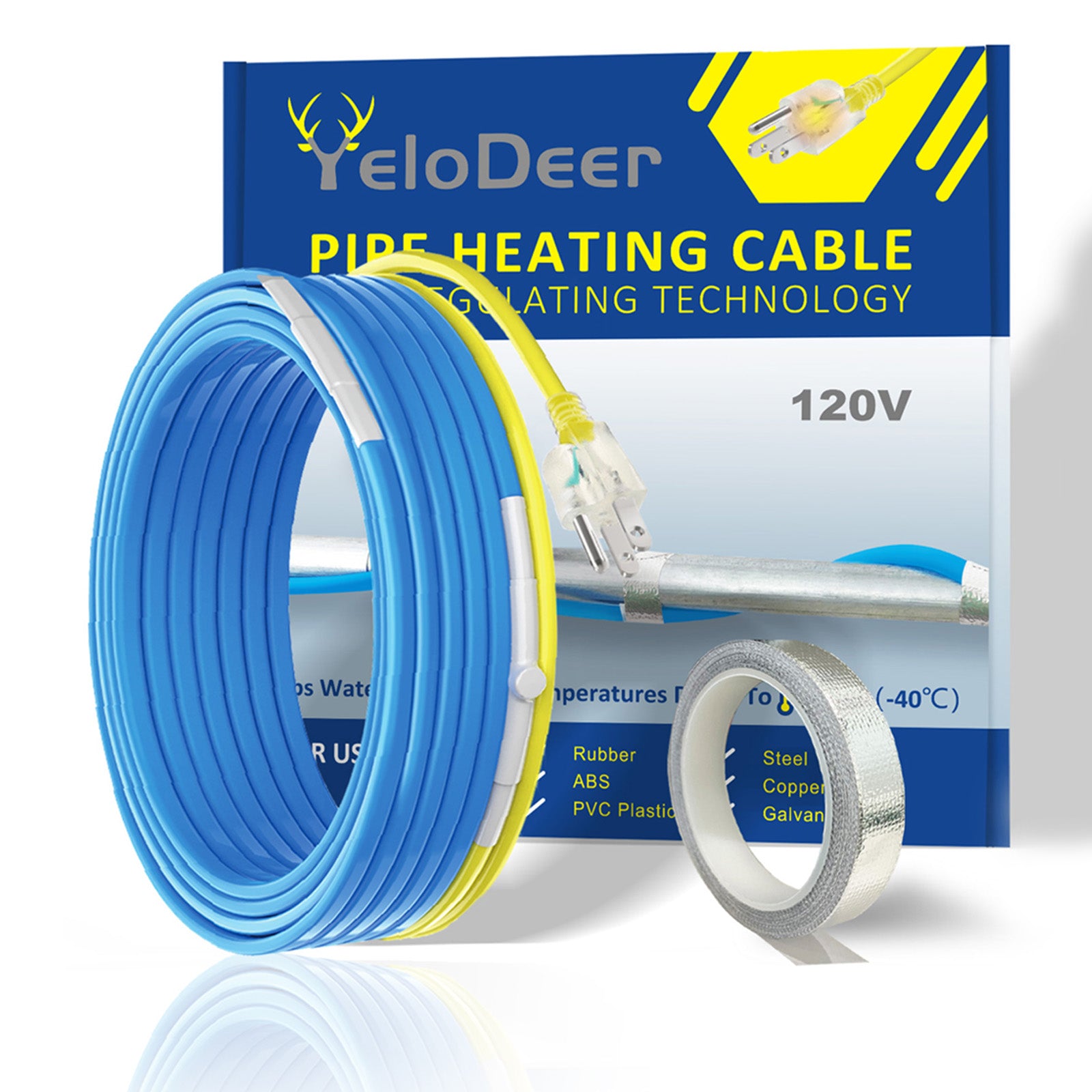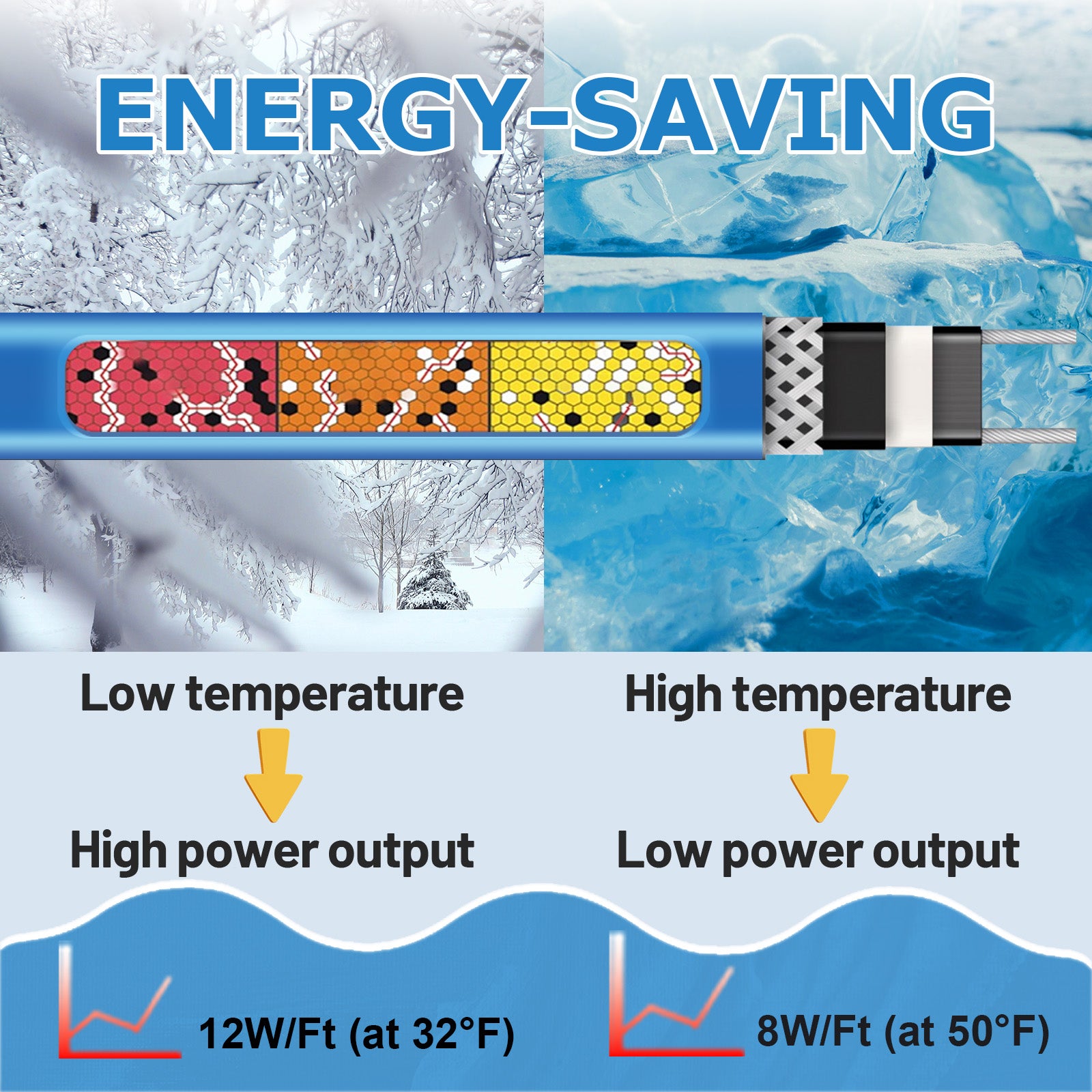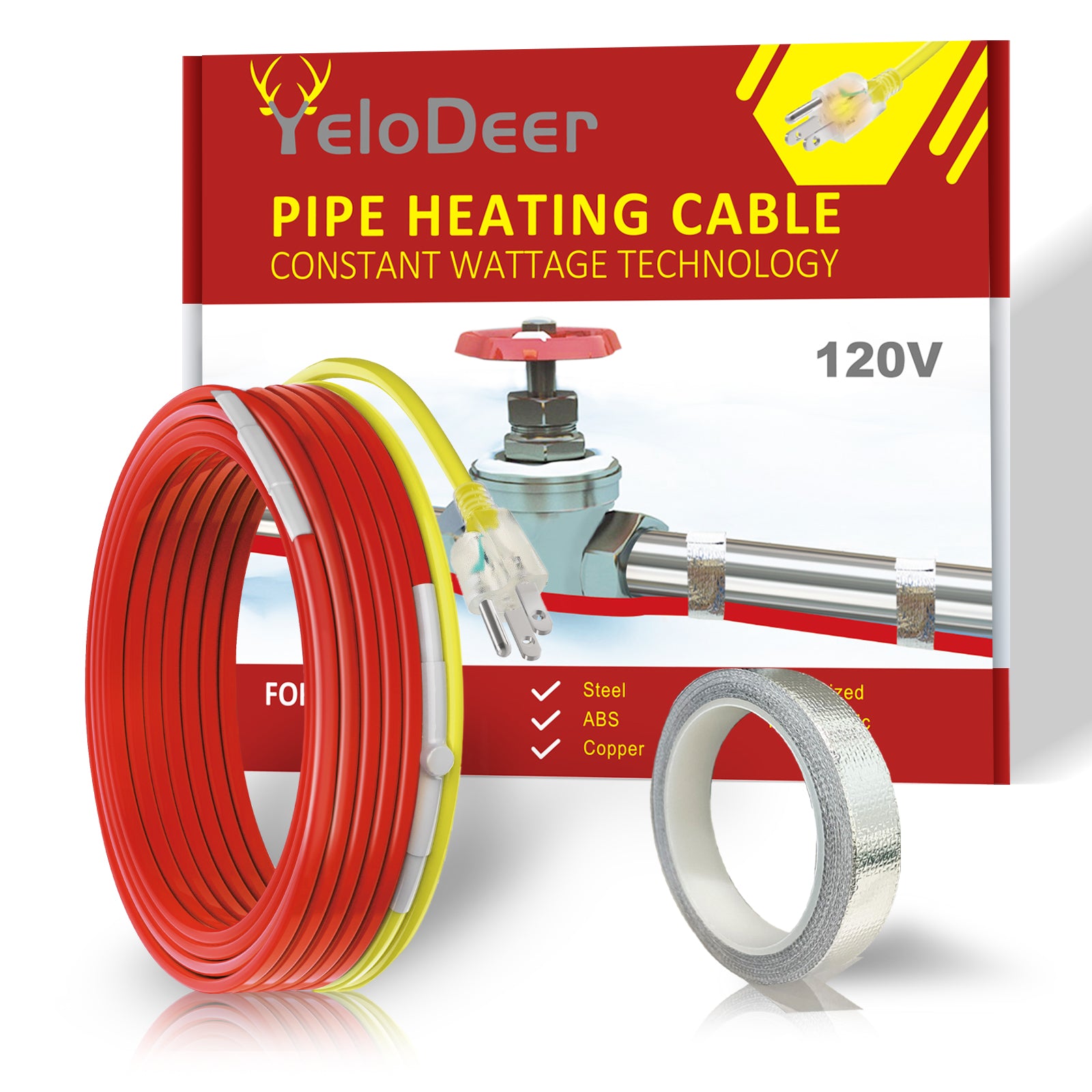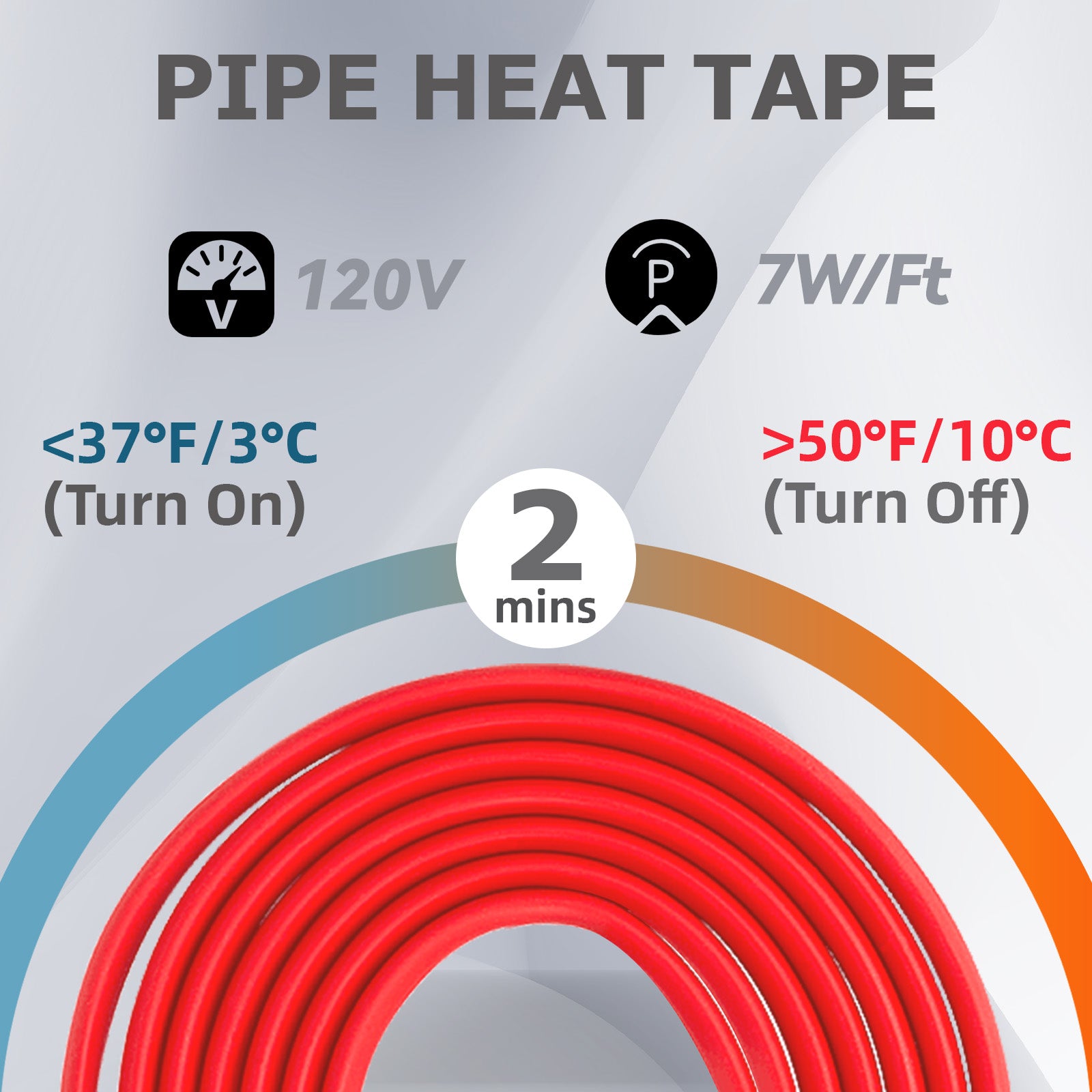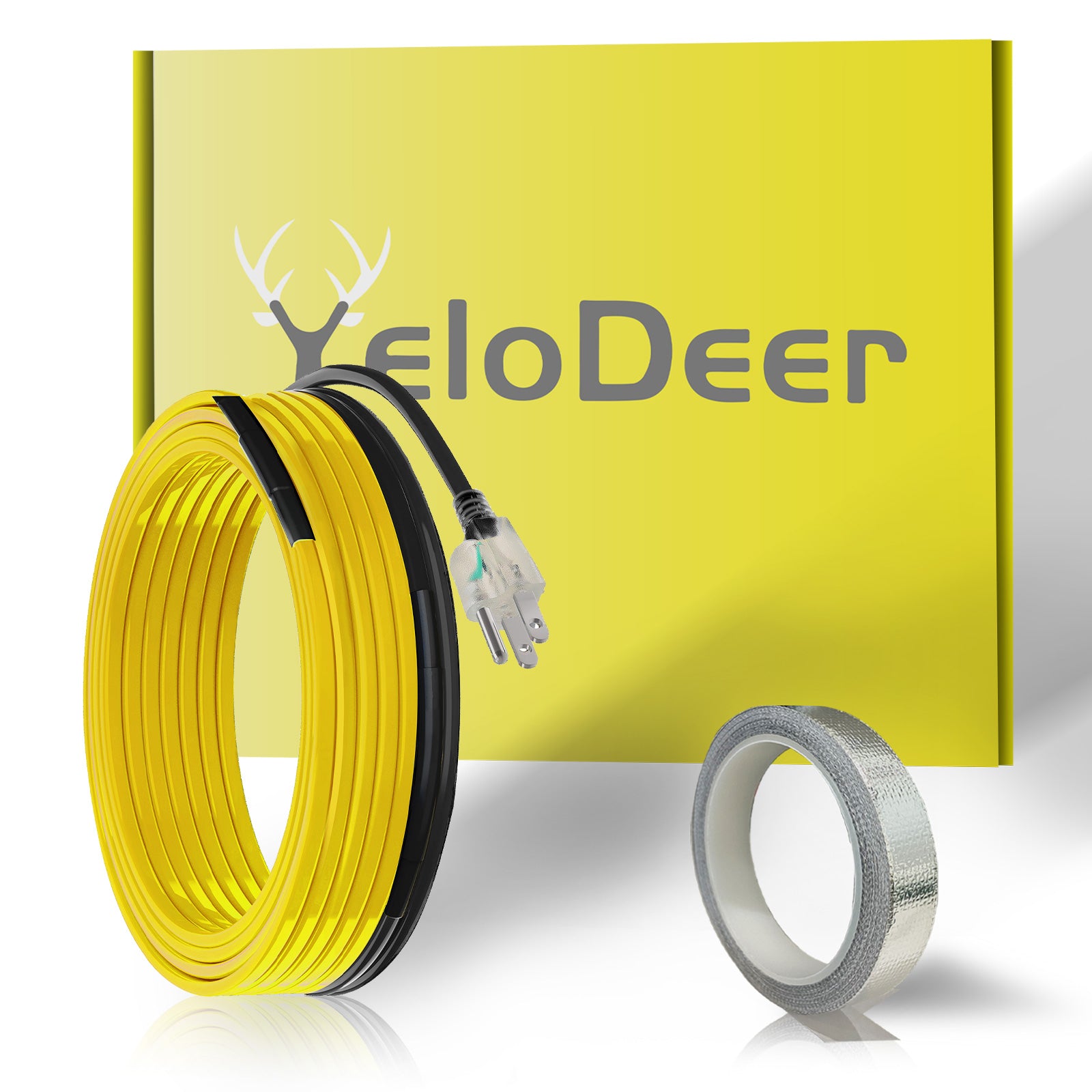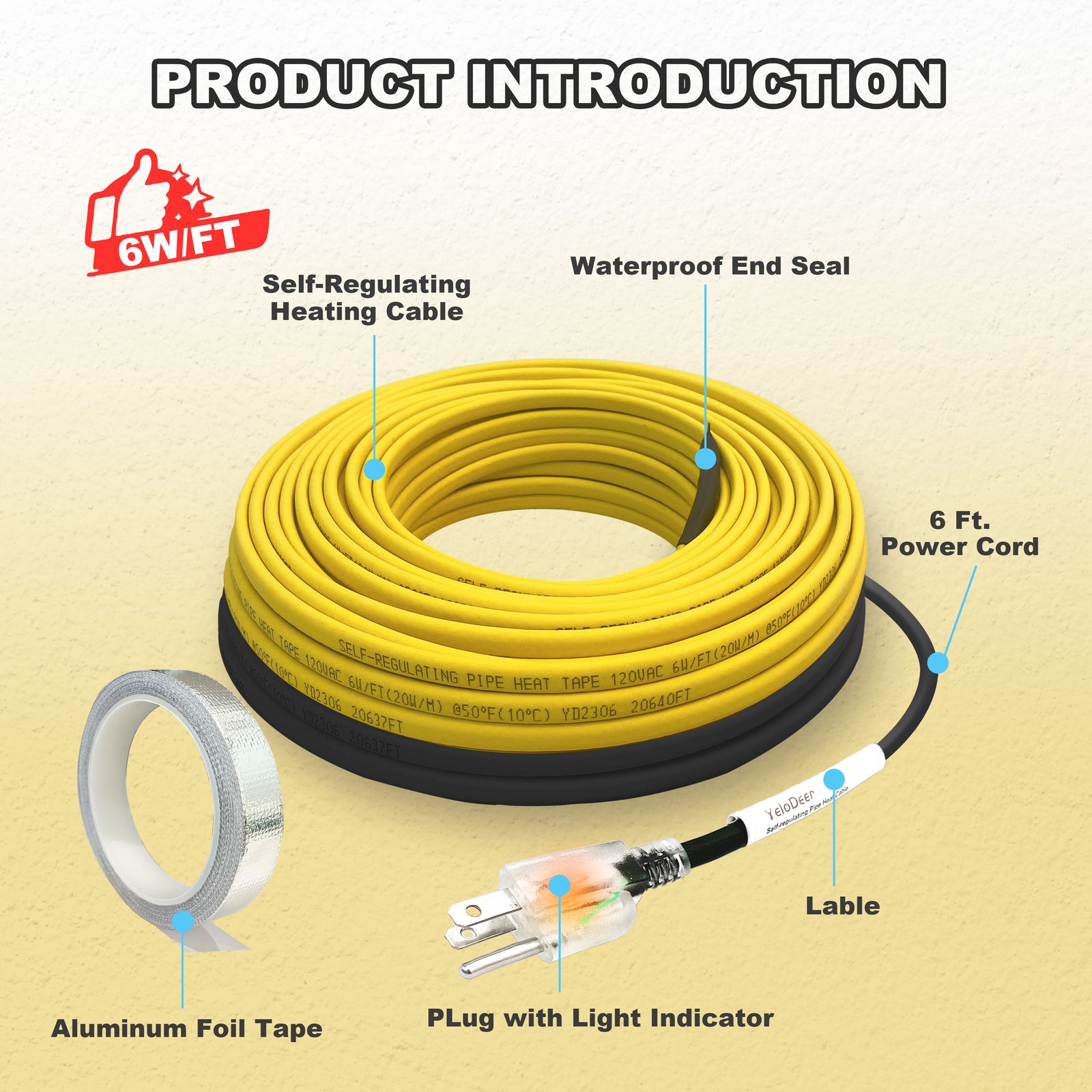When protecting your water pipes from freezing during winter, pipe heating cables provide a dependable solution. Deciding between in-pipe and on-pipe installations might seem straightforward based on application, but each method has unique benefits. Below, we’ll break down these two approaches to help you determine the best fit for your specific needs.

In-Pipe Installation
Overview:
In-pipe heating cables are designed to be installed inside the water pipe itself. This method involves inserting the heating cable directly into the pipe, making it an ideal solution for pipes that are difficult to access from the outside or for water systems that are exposed to extremely cold temperatures.
Advantages:
1. Direct Contact Heating: Since the cable is in direct contact with the water, it provides efficient and consistent heating, ensuring that the water inside the pipe remains above freezing.
2. Ideal for Insulated Pipes: In-pipe cables are perfect for pipes that are already insulated, as they don't require external access for installation.
3. No Need for External Access: This method is beneficial for pipes that are buried underground or located in confined spaces where external access is difficult.
Disadvantages:
1. Installation Complexity: Installing the cable inside the pipe requires careful preparation, and the installation process needs to be handled with extreme care to avoid compromising the original sealing of the in-pipe heating cable, which could lead to its failure.
2. Potential for Obstruction: The presence of the cable inside the pipe could potentially obstruct the flow of water, particularly in smaller pipes.
3. Safety Considerations for Potable Water: When using in-pipe heating cables for drinking water pipes, it is crucial to ensure that the cable's outer sheath material is safe, non-toxic, and suitable for potable water applications.
On-Pipe Installation
Overview:
On-pipe heating cables are installed on the exterior surface of the pipe. This method involves wrapping or securing the cable along the length of the pipe, providing heat from the outside to prevent freezing.
Advantages:
1. Easy Installation: On-pipe installation is generally easier and faster, often allowing for DIY installation without the need for specialized tools or skills.
2. Minimal Interference with Water Flow: Since the cable is on the outside of the pipe, it does not interfere with the flow of water inside the pipe.
3. Versatile Application: On-pipe cables can be used on a variety of pipe materials and sizes, making them a versatile option for different pipe systems.
Disadvantages:
1. Less Direct Heating: Because the cable is outside the pipe, the heat must penetrate the pipe material, which can be less efficient in extreme cold conditions compared to in-pipe heating.
2. Vulnerability to External Damage: The external placement of the cable makes it more susceptible to physical damage or insulation wear, which could reduce its effectiveness over time.
3. Dependent on Insulation: On-pipe cables are more effective when combined with proper pipe insulation. Without it, the heat can dissipate quickly, reducing the cable's efficiency.
Which Method is Right for You?
● Choose In-Pipe Installation If:
○ Your pipes are difficult to access externally.
○ You require direct heating of the water inside the pipe.
○ The pipes are already insulated or located in areas with extreme cold.
● Choose On-Pipe Installation If:
○ You prefer a simpler, DIY-friendly installation process.
○ Your pipes are easily accessible and can be insulated externally.
○ You want a versatile solution that doesn’t interfere with water flow.
In conclusion, both in-pipe and on-pipe heating cables offer effective solutions for preventing pipe freeze-ups. Your choice between the two should be guided by the specific needs of your water system, the environmental conditions, and the ease of installation.
By understanding the differences between these methods, you can ensure that your pipes remain protected throughout the winter, keeping your water flowing even in the coldest weather.

